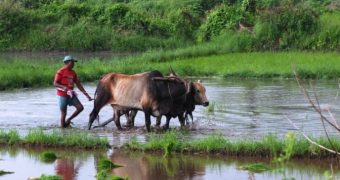Kiribath, or milk rice, holds a cherished place in Sri Lankan culture as a symbol of prosperity, unity, and tradition. This simple yet profound dish is a cornerstone of the nation’s culinary heritage, celebrated during key moments of life and festivities.
Celebrations
Kiribath takes center stage during celebrations and auspicious occasions in Sri Lanka. It is a staple on the first day of each month, symbolizing a fresh start. The Sinhala and Tamil New Year sees kiribath served alongside an array of traditional sweets, embodying the spirit of renewal and festivity. Weddings and other significant ceremonies also include kiribath, marking joyous milestones with its comforting presence.
Transitions
Times of transition or new beginnings in life often call for kiribath. Be it moving into a new home, starting a new job, or embarking on a significant life journey, kiribath is prepared as an emblem of hope and good fortune.
Infants
In Sri Lankan culture, kiribath is the first solid food given to infants, signifying a healthy and prosperous life ahead. This practice underscores the dish’s role in fostering well-being and continuity.
Identity
Beyond its culinary value, kiribath is a profound symbol of Sri Lankan identity. It reflects the nation’s agrarian roots and its deep connection to rice cultivation, a staple of life and culture in Sri Lanka. Its presence at the table reinforces a sense of belonging and tradition.
How to Make Sri Lankan Kiribath (Milk Rice)
Kiribath is a simple dish made by cooking rice with coconut milk, combining rich flavors with deep cultural meaning. The name comes from the Sinhala words kiri (milk) and bath (rice). It is often served with flavorful accompaniments like lunumiris (a spicy onion-fish condiment) or seeni sambol (a sweet and spicy onion relish).
Ingredients:
- 2 cups of white rice (preferably short-grain)
- 2 cups of thick coconut milk
- 4 cups of water
- 1 teaspoon of salt
Instructions:
- Rinse the rice thoroughly and cook it in boiling water for about 15 minutes or until the grains are soft.
- Add the coconut milk and salt to the cooked rice. Stir well and cook on low heat until the liquid is fully absorbed, creating a creamy consistency.
- Transfer the cooked kiribath to a flat dish and smooth it out with a spatula.
- Let it cool slightly, then compress it into diamond or square shapes for serving. To prevent sticking, dip your knife in coconut milk before cutting.
Kiribath is more than just food; it’s a cultural emblem interwoven with Sri Lanka’s traditions and way of life. Whether enjoyed during a celebration or shared as a comforting family meal, kiribath embodies the values of togetherness, prosperity, and gratitude.










